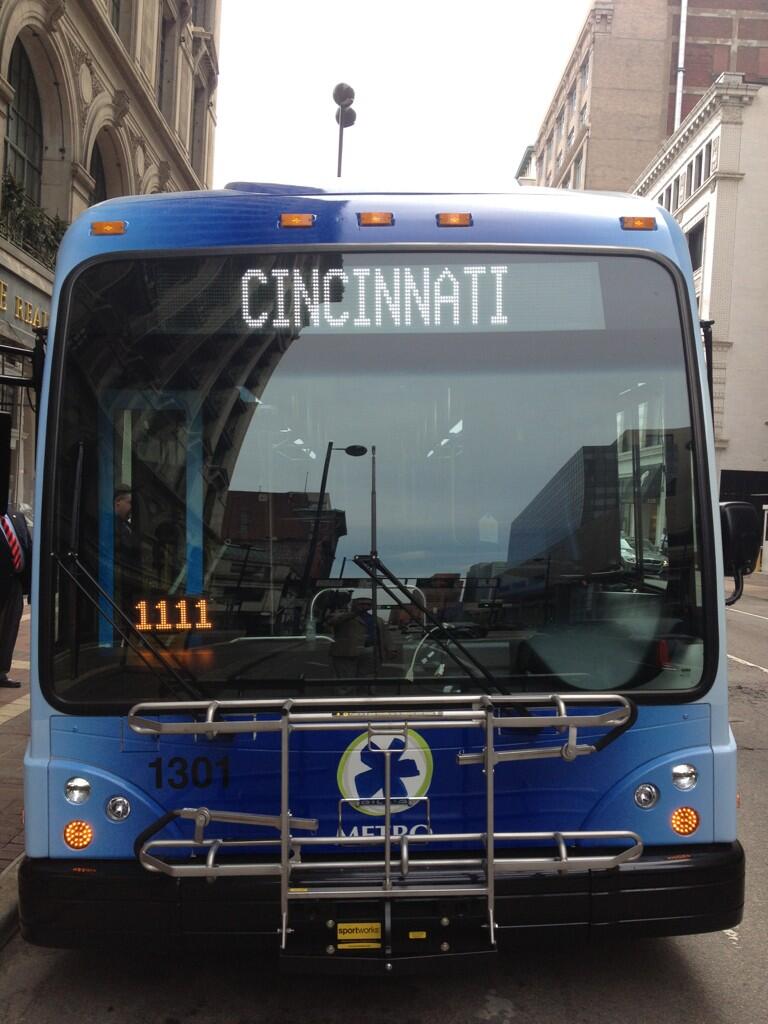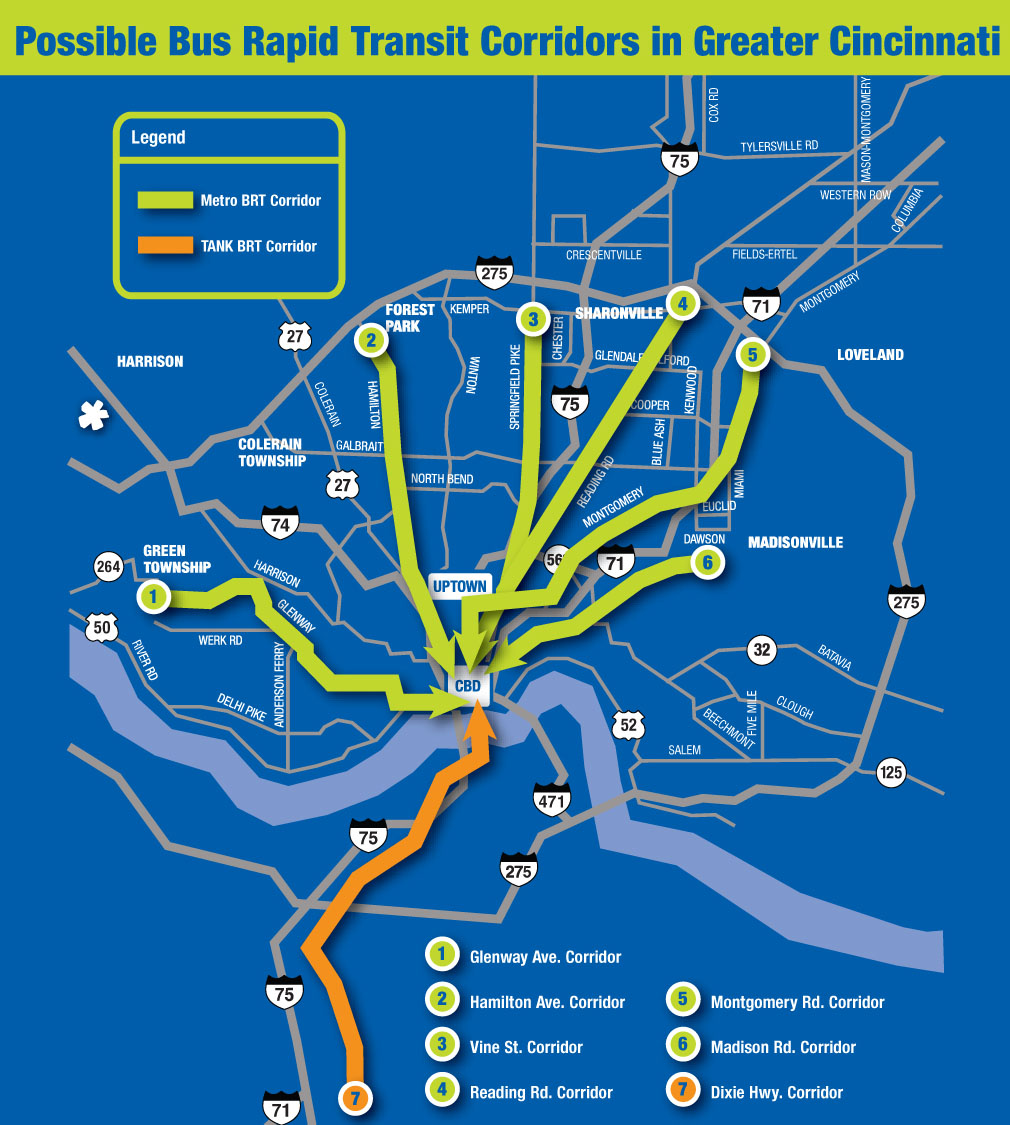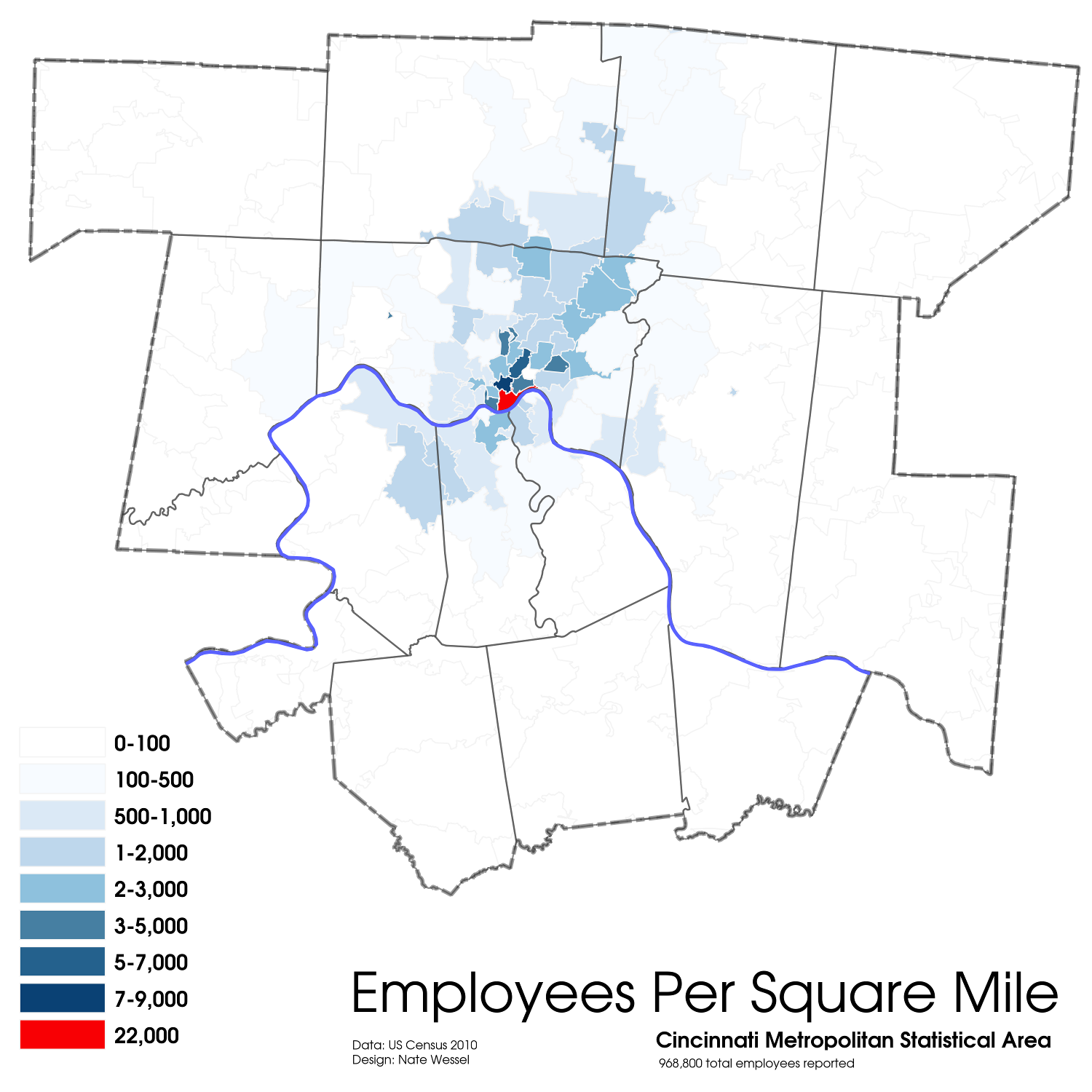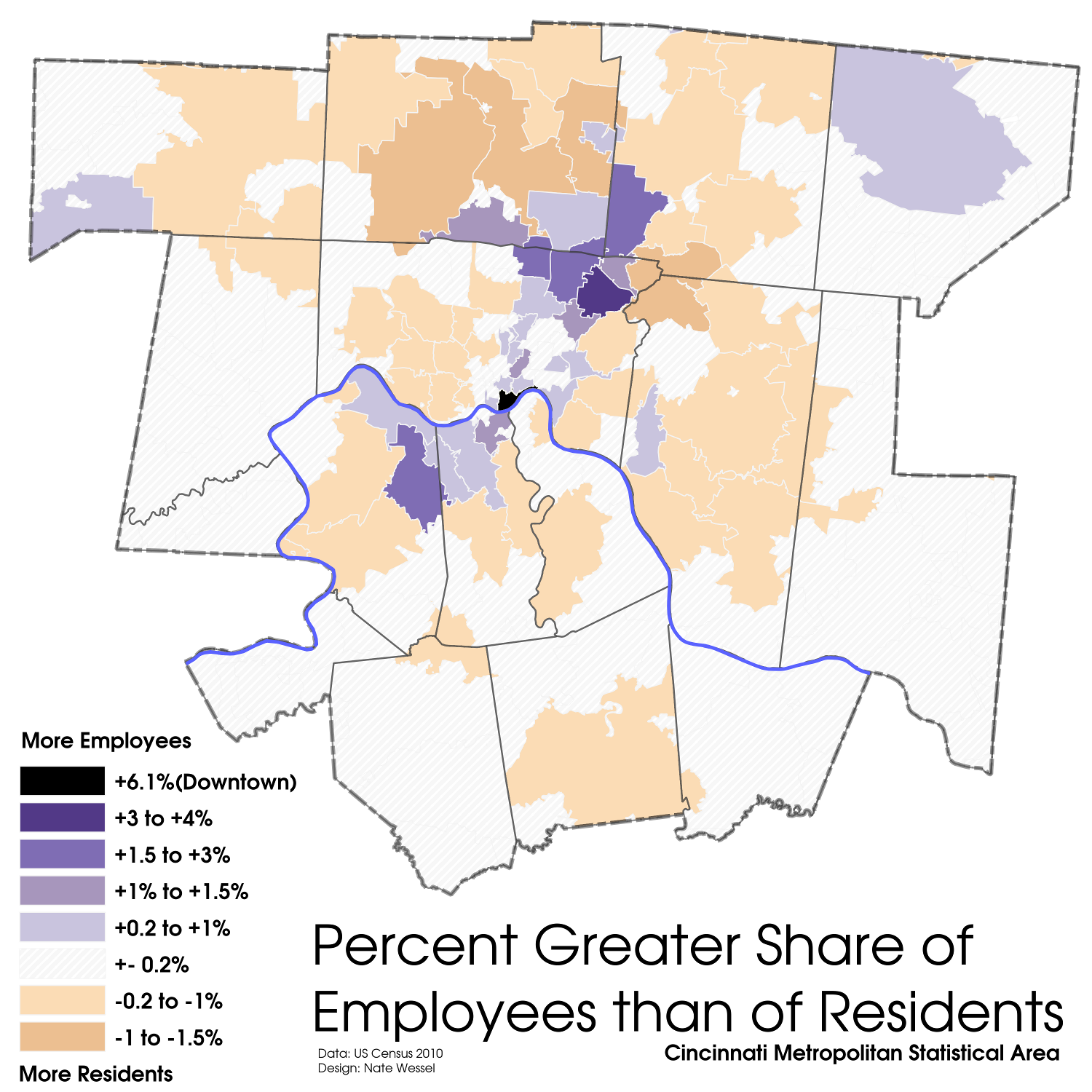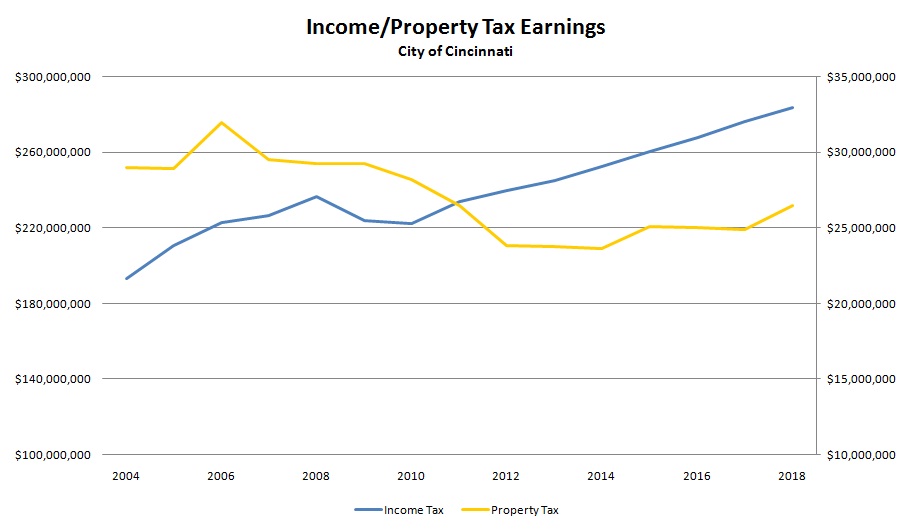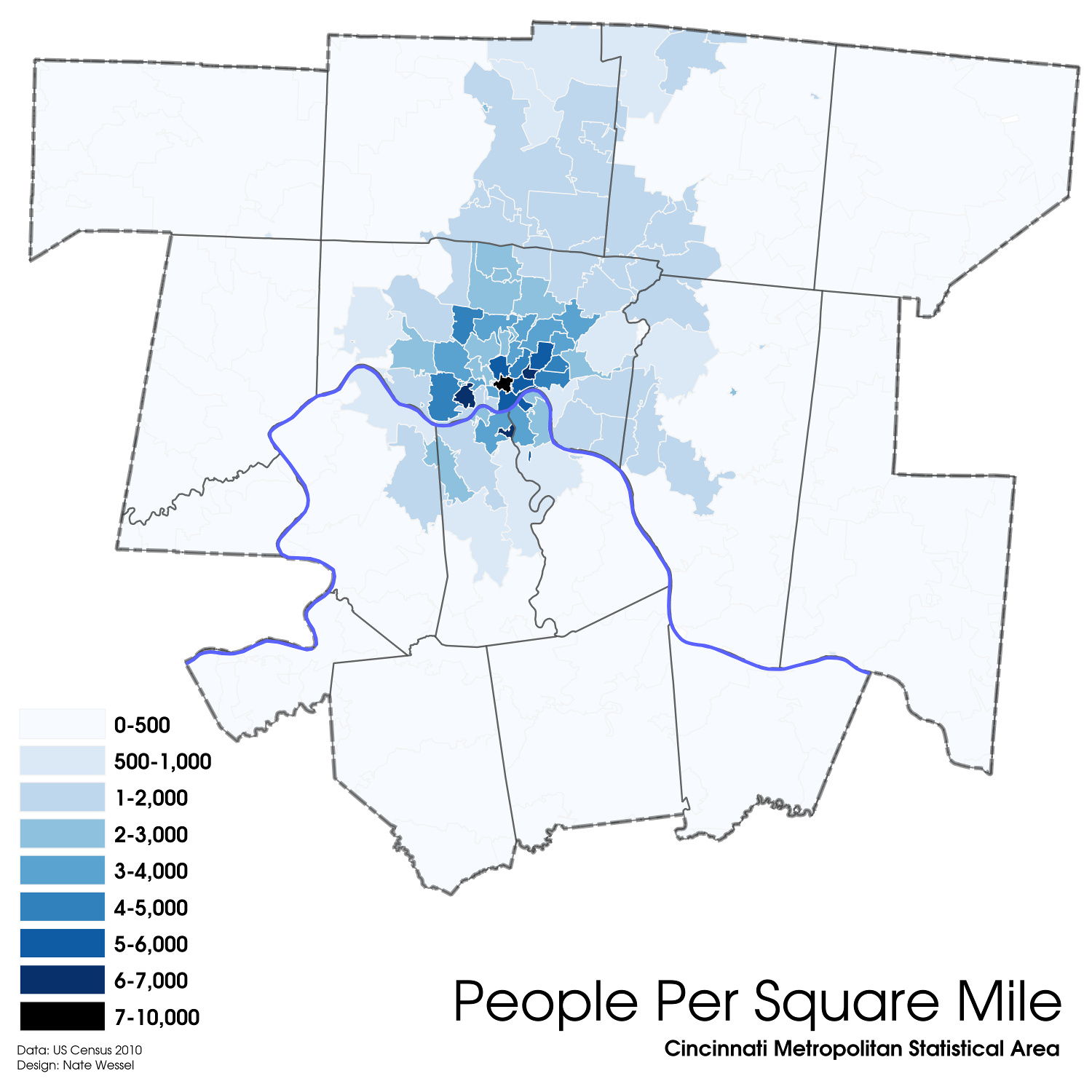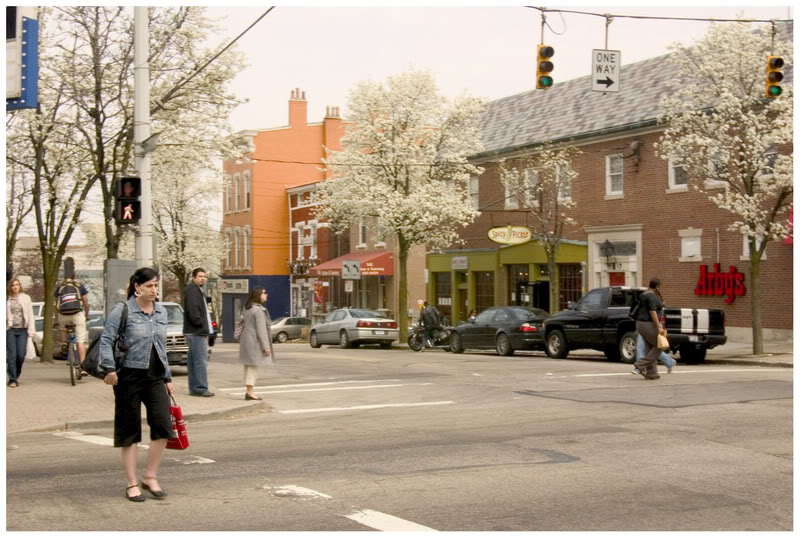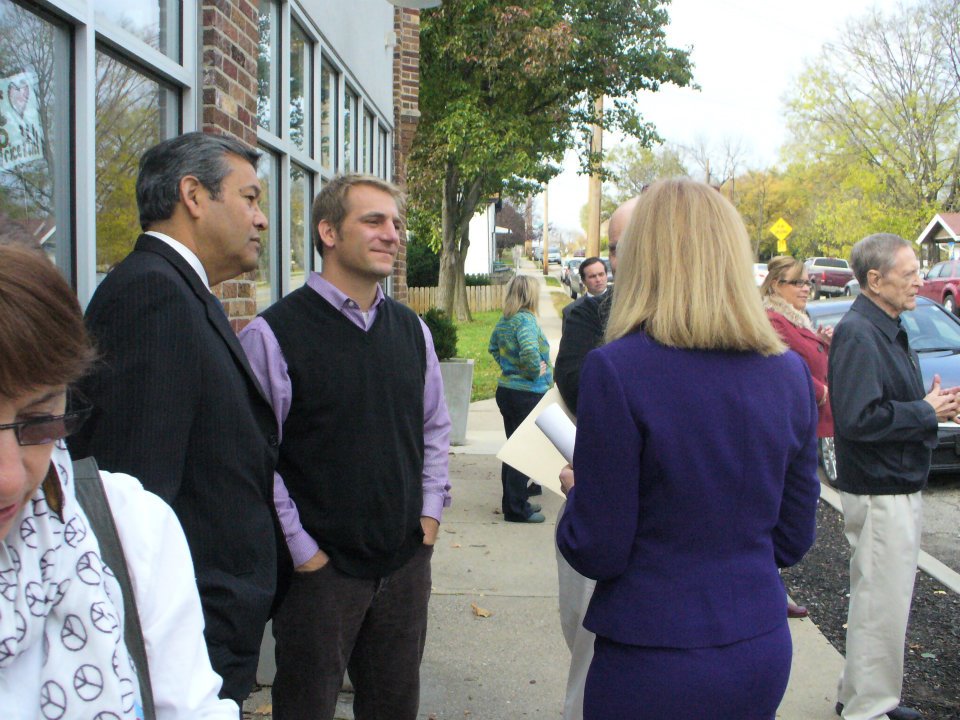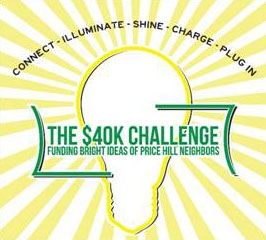Following a year of ridership growth, the Southwest Ohio Regional Transit Authority (SORTA) will roll out a series of improvements to its Metro bus service this year. Agency officials say that the improvements will be rolled out in two phases.
The first round will go into effect this August and will include significant service enhancements at the new Glenway Crossing Transit Center on the west side.
A new Route 32 will provide all-day service between Price Hill and Downtown, a modified Route 64 will connect Westwood with retail on Ferguson Road and the transit center, and new connections will be offered to Route 38X to Uptown and Route 77X to Delhi. Additional service will also be added to Route 19 along Colerain Avenue and Route 33 along Glenway Avenue.
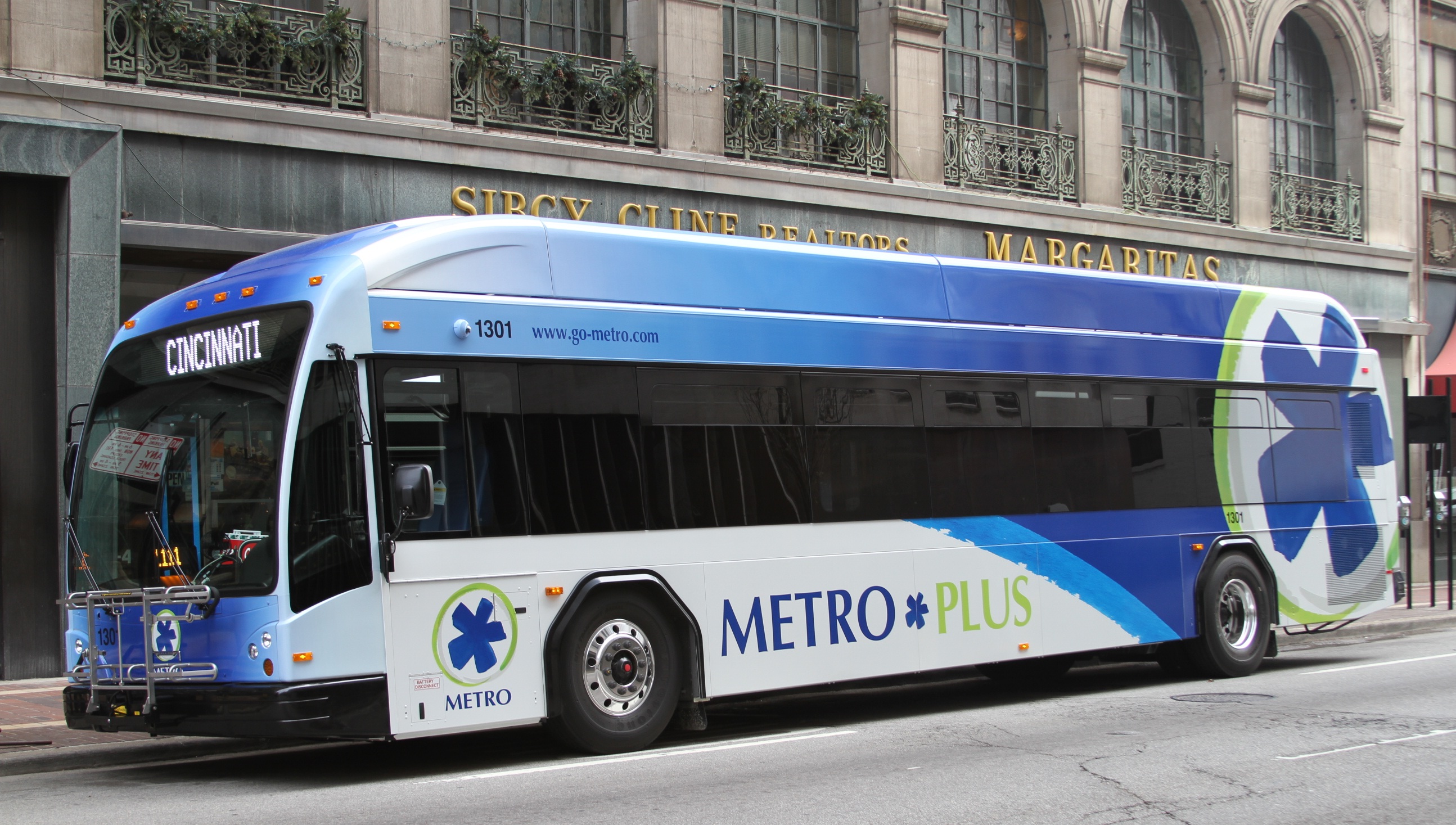
New Metro*Plus buses were revealed to the public this week, and will be in operation by August. Image provided.
New direct crosstown services, from the Glenway Crossing Transit Center, will take riders to Oakley via the new Mercy Health West Hospital on Route 41, and to the new Uptown Transit District and onto Hyde Park via Route 51.
The transit agency will also begin operating the new pre-bus rapid transit (BRT) service, called Metro*Plus, between Kenwood and the Uptown Transit District this August.
Officials envision Metro*Plus as offering faster service through fewer stops and enhanced visibility through uniquely designed buses and more robust bus stops. The service will initially connect Uptown with the Kenwood area via Montgomery Road, but will be judged for consideration along another six corridors throughout the region.
Attend our free event this Friday from 5pm to 7:30pm at the Niehoff Studio in Corryville on bus rapid transit and bikeway planning that will include an expert panel discussion and open house.
The improvements are a result of SORTA’s 2012 planning efforts, and will be reviewed to determine whether or not the changes should stay in effect.
“Last year, we listened to the community’s suggestions and, as a result, are proposing a number of service changes to better meet our customers’ needs and attract new riders,” Terry Garcia Crews, Metro CEO, stated in a prepared release. “We’re ready to go forward with improvements that will make Metro more efficient, more convenient, and easier to ride.”
Officials say that the second round of enhancements will be rolled out this December and will include added service to Route 20 along Winton Road, Route 78 along Vine Street, Route 31 crosstown service, Route 43 along Reading Road, and faster service on Route 1 between the Museum Center and Eden Park.
It is also expected that the four transit boarding areas, that form the $6.9 million Uptown Transit District, will also be complete by the end of the year, and taking on the additional service to the region’s second largest employment center, and one of the city’s fastest growing population centers.
SORTA officials emphasize that the changes are all short-term in nature, and that they would like public feedback on the adjustments. Officials also state that the improvements are being made within Metro’s 2013 operating budget, and will not require fare increases.
Metro will host a public meeting on Wednesday, May 1 from 8am to 5:30pm at the Duke Energy Convention Center (South Meeting Room 232). Officials say that visitors can come anytime during those hours, and that presentations will be offered every hour on the hour.
Comments can also be submitted online, by email at routecomments@go-metro.com, fax at (513) 632-9202, or mail to 602 Main Street, Suite 1100, Cincinnati, OH 45202. The deadline for public comments is May 1, 2013.
